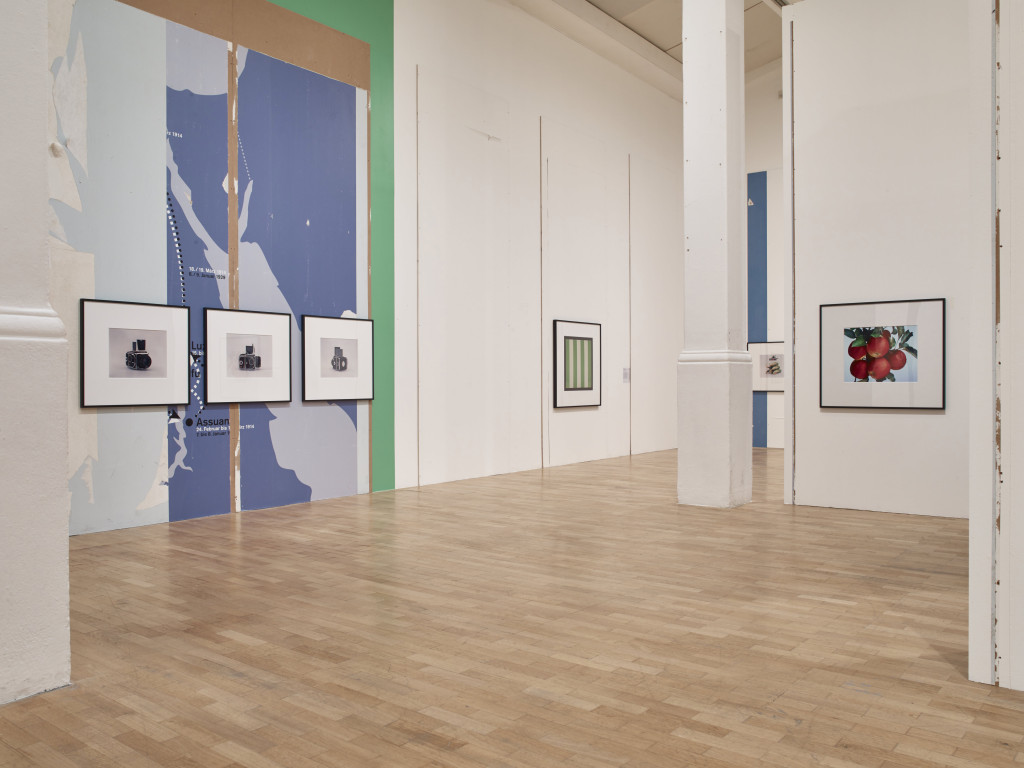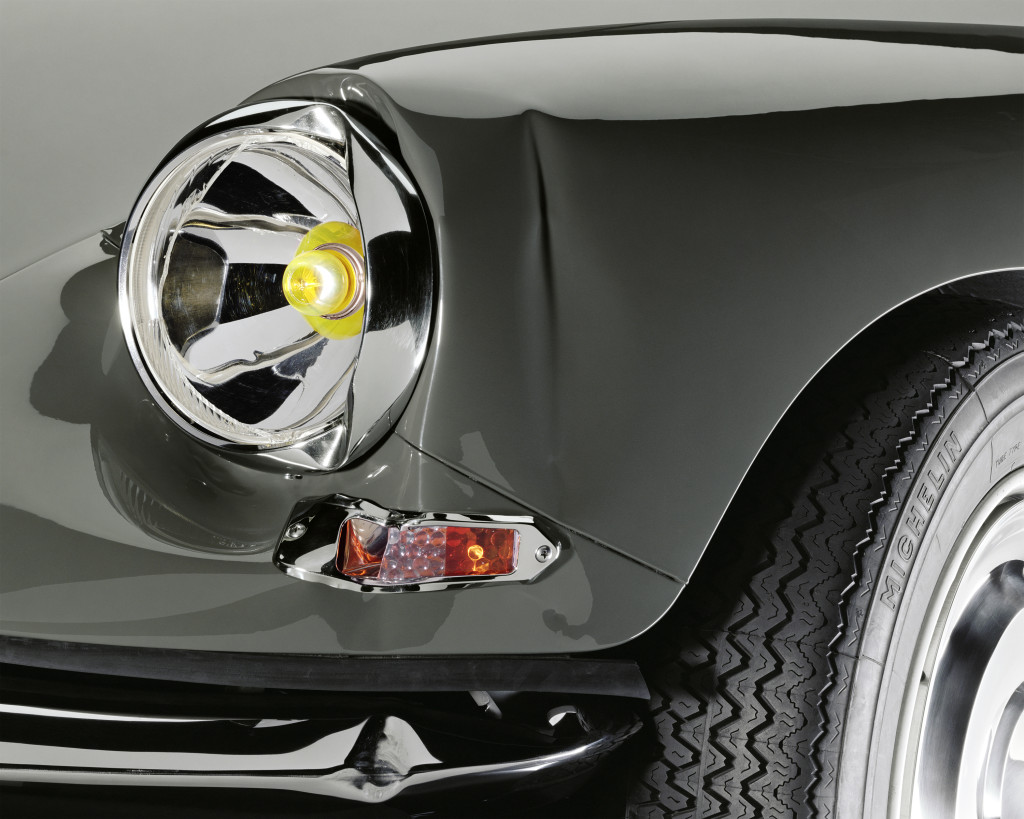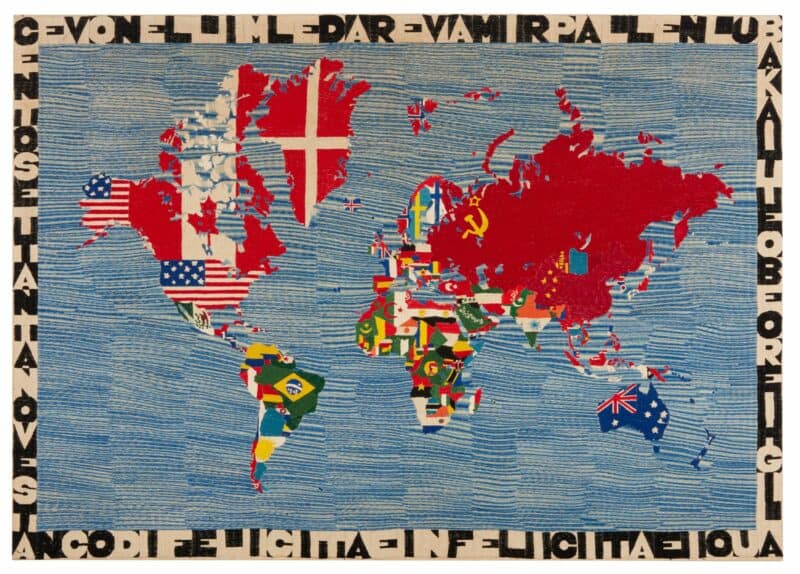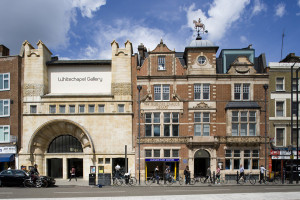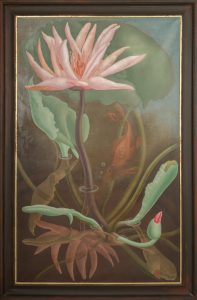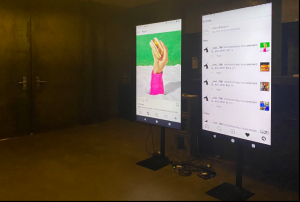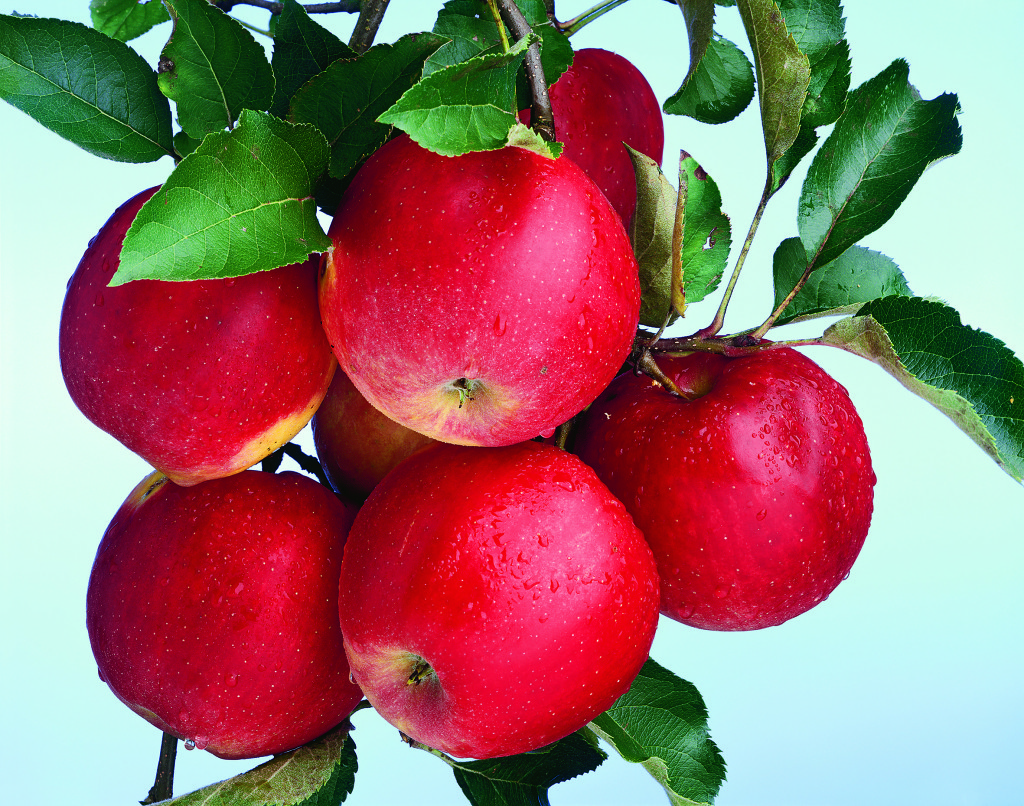
Christopher Williams Bergische Bauernscheune, Junkersholz, Leichlingen, September 29, 2009 2010 Private Collection, Belgium Image courtesy Galerie Gisela Capitain, Cologne and David Zwirner, New York/London
‘The Production Line of Happiness’ brings together over 50 photographs from influential American artist Christopher Williams’ 35-year career.
One of the most influential artists working with photography and the production and display of images, Christopher Williams’ recent photographs reveal the unexpected beauty and cultural resonance of commercial, industrial and instructional photography
Often working in collaboration with set designers, models and technicians, Williams adopts the production methods of the commercial world, resulting in technically precise photographs that recall imagery from 1960s advertising, the Cold War era, as well as the histories of art, photography and cinema.
But there’s more than meets the eye.
Closer inspection reveals that the perfect images contain flaws and aberrations which would usually be removed in production or postproduction, such as a model’s dirty feet or a bruise on a ripe apple.
Williams also sees the photographs themselves as part of a larger system of display which includes exhibition design, walls, books, posters, videos, vitrines, and signage, and uses these elements playfully within the exhibition.
The photographs are displayed in an architectural installation specially conceived by the artist and inspired by histories of display. Temporary walls come from art institutions in the Rheinland region of Germany, where Williams currently lives and works and are both a reference to and a partial reprisal of a 2009 exhibition at the Bonner Kunstverein made in collaboration with Austrian artist Mathias Poledna.
Each of the exhibition spaces of The Production Line of Happiness are visually and architecturally linked through bright green signage, which references both the colour of the Whitechapel Gallery edition of the exhibition catalogue, and a photograph by Williams of a tile by artist Daniel Buren, which is also included in the exhibition.
VIDEO: Guest curator Mark Godfrey (Curator, Tate Modern) gives a tour of the exhibition.
The Work
Five new works never seen before in the UK go on display including a pristine image of a broken Citroen car headlight, an image influenced by British and European Pop art.
The earliest work in the exhibition SOURCE… (1981). For this the artist visited the John F. Kennedy Presidential Library and Museum where he chose and re- photographed 4 images all taken on a particular day in 1963, the year Kennedy was assassinated, which all capture the iconic politician with his back to the camera.
In Angola to Vietnam*, Williams photographed glass flowers made by the Dresden- based Blaschka family, housed in the Botanical Museum in Harvard University. He selected only the national flowers of countries from A – V cited on an Amnesty International list of nations engaging in political disappearances for this installation of 27 black and white photographs.
A single work consisting of a photograph and a wall, Bouquet for Bas Jan Ader and Christopher D’Arcangelo (1991), is presented in Gallery 9, and pays tribute to two artists who died at a young age in the 1970s. A still life photograph of a bouquet of flowers, referencing a work by Bas Jan Ader, is installed on a wall made to the artists specifications, which is based on a work by Christopher D’Arcangelo that involved the construction of a wall for the purpose of displaying others artworks.
This work highlights Williams’ long-standing engagement with architecture and the history of display.
Young Hee Kim and Gyung-Hwa Han (1992) is a portrait of two Korean women wearing blue contact lenses. Closer viewing reveals that that one of the sitters has removed a lens to reveal a natural brown eye.
For Example: Die Welt ist schön (The World Is Beautiful) (1993 -2001), is an eight-year project inspired by Albert Renger-Patzsch’s 1928 book containing 100 pictures of natural and man made creations. Williams’ subjects include a tropical beach in Cuba, carefully maintained for tourists; an overturned Renault recalling the student unrest in Paris of May 1968; and two beetles on their backs.
For Example: Dix-huit leçons sur la société industrielle (Eighteen Lessons on Industrial Society) (2003– ongoing) takes its title from the 1962 book by French sociologist Raymond Aron. These detailed images of photographic equipment – cross-sections of cameras, lenses and photographic colour charts – allow the camera to take centre stage at the very beginning of the exhibition.
The series also includes highly produced, glossy images of everyday objects such as apples and tyres, as well as models and products next to colour charts used by photographers to assist in the printing process, or a Playboy model amidst the lighting equipment and props of a professional photo shoot, stretching and laughing during a pause from the labour involved in the construction of images of fantasy and desire.
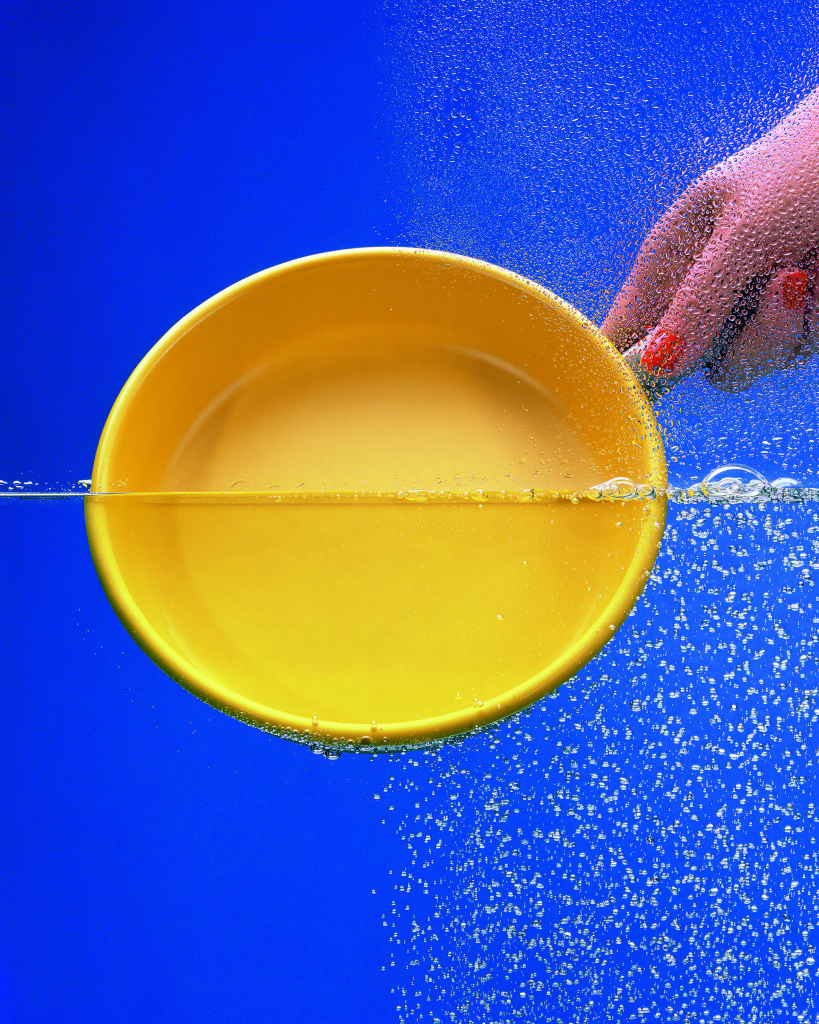
Christopher Williams Programme K-Line, Matt Dulling Spray, CFC Free … Studio Rhein Verlag, Düsseldorf, August 24, 2014 2014 Private Collection, Germany Image courtesy Galerie Gisela Capitain, Cologne and David Zwirner, New York/London
Special Events
A series of special events are running at The Whitechapel Gallery to support the exhibition FAD has selected our top three events below:
1 Mark Godfrey on Christopher Williams
#FirstThursday Thurs 4th June, 7pm Galleries 1, 8 & 9:
Art historian and guest-curator Mark Godfrey leads a tour of the exhibition. Taking place within the galleries and focusing on specific works on display, the tour offers an insight into the curator’s approach and provides an introduction to the conceptual artist’s work and the key themes explored in the show. More details
2 Cally Spooner
Thurs 11th June, 7pm Zilkha Auditorium
Artist Cally Spooner is joined by Antonia Blocker, Curator: Public Programmes,(@antoniablocker) to discuss art that adopts the language of its own production as its content. Using her forthcoming film and Christopher Williams’ exhibition as reference points, the conversation reflects on how sites and mechanisms of production on an industrial scale, such as the film studio, can be rendered into an artistic output, such as an image. The discussion considers what it means to both adopt and outsource the processes of such structures, and whether this creates the potential for alternative aesthetic conventions. More Details
3 Film: Walls Words Pictures Lessons
Sat 13th June, 1–6pm Zilkha Auditorium
A chance to watch four remarkable films inspired by the exhibition: Peter Kubelka’s Arnulf Rainer, Jean Rouch & Edgar Morin’s Chronicle of a Summer, Morgan Fisher’s Picture and Sound Rushes and Noel Burch & Allan Sekula’s The Forgotten Space. More Details
Details on all the events for Christopher Williams: The Production Line of Happiness
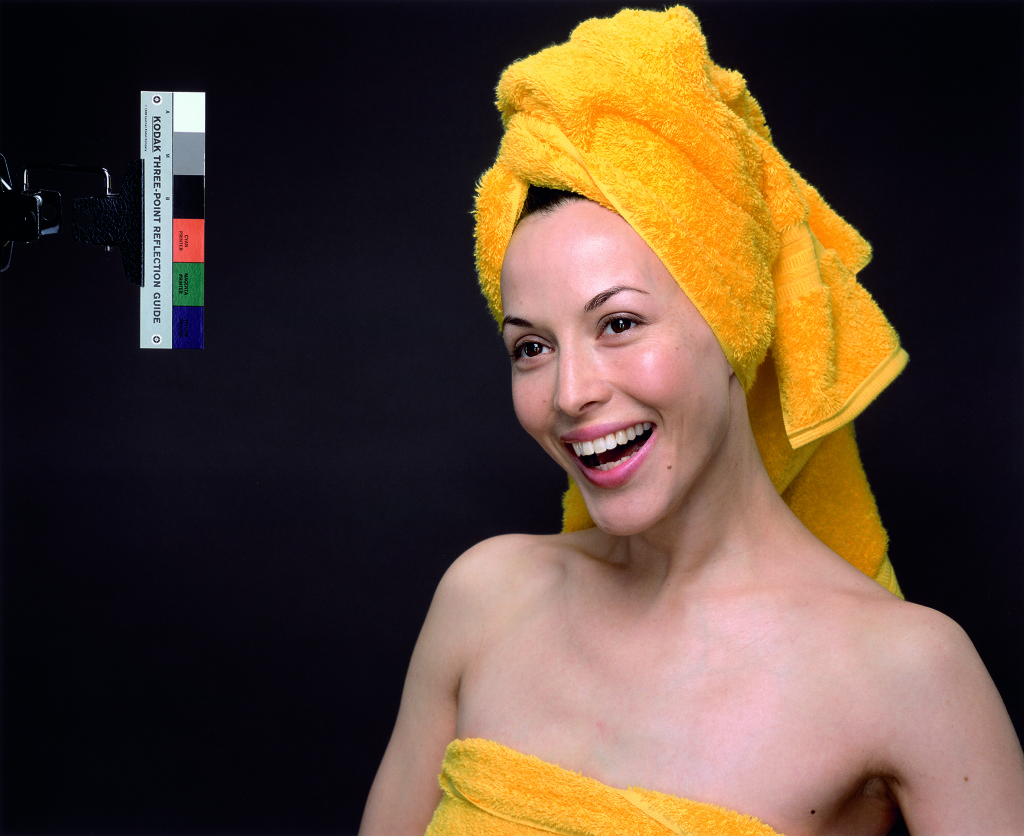
Christopher Williams Kodak Three Point Reflection Guide, ©1968 Eastman Kodak Company, 1968, (Meiko laughing), Vancouver, B.C., April 6, 2005 2005 Ringier Collection, Switzerland Image courtesy Galerie Gisela Capitain, Cologne and David Zwirner, New York/London
Extra Reading:
1 Christopher Williams: The Production Line of Happiness review – an exercise in fastidious cogitation:
The Guardian
2 Christopher Williams on Wikipedia: en.wikipedia.org/wiki/Christopher_Williams
3 Christopher Williams: The Production Line of Happiness, Whitechapel Gallery – review: A photographer who genuinely loves his medium: London Evening Standard
Christopher Williams: The Production Line of Happiness Through to 21st June 2015, Galleries 1, 8 & Victor Petitgas Gallery (Gallery 9) Whitechapel Gallery, 77 – 82 Whitechapel High Street, London E1 7QX www.whitechapelgallery.org
Thank-you to The Whitechapel for supporting FAD! We really appreciate it.

